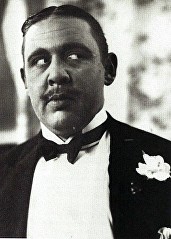






INTRODUCTION The Belgian detective Hercule Poirot featured in 33 of Agatha Christie’s novels, as well as 50 or more of her short stories, all published between 1920 and 1975. I say or more because some of the stories published after her death were re-hashes of previous works.
Poirot has also featured in novels by Sophie Hannah (commissioned by the Christie estate).
After Sherlock Holmes, he is the most famous and recognisable detective in the history of fiction.
WHAT HE’S LIKE Poirot’s most singular characteristics and features include his mania for symmetry and order, a head shaped like an egg, green eyes that flash like a cat’s, luxuriant moustache(s) and a phenomenal network of ‘little grey cells’. Of all of these he was inordinately proud.
There is a bit more to him than that, however. He came from a poor Catholic background and was educated by nuns, remaining (if not always acting like) un bon catholique all his life. He made his way up from the lowest ranks of the Belgian police force to a position of eminence before being forced to flee his homeland during the Great War (and thus become reliant on hand-outs from others).
EARLY POIROT Hercule Poirot first appeared in 1920 in The Mysterious Affair at Styles. During that decade, there were many short stories featuring him published in magazines such as The Strand, but only four more Poirot novels (and one of those, The Big Four, was cobbled together from preciously published short stories). Even so, these novels, and particularly The Murder of Roger Ackroyd, had a huge impact at the time.
The 1930s are seen by many as Agatha Christie’s golden period, in particular the works featuring Poirot: Murder on the Orient Express, The ABC Murders, Death on the Nile, Three Act Tragedy, Appointment with Death…
From 1920 through to 1933 or so, Poirot was accompanied on most of his cases by his vacuous associate Captain Hastings and the somewhat slow-witted Inspector Japp. His subsequent trips on the Orient Express, up the Nile and to Mesopotamia and Petra could be construed as desperate attempts (by the author) to get him away from them, although Hastings and Japp are allowed the occasional re-appearance for old times sake.
By the outbreak of the Second World War in 1939, Hercule Poirot had become one of the most recognisable characters in fiction worldwide. And Agatha Christie had got heartily sick of him.
Even so, the Poirot novels published in the 1940s, whilst none can be labelled classic ‘whodunits‘ along the lines of those from the previous decades, included some of her very finest books: Five Little Pigs, Sad Cypress and The Hollow are three examples.
Thereafter Poirot was increasingly sidelined – of the twenty-six novels writen after 1950, he only features in ten.
KILLING POIROT Agatha Christie famously said, in the 1930s, that she wanted to ‘polish him off’ but he wouldn’t let her! Then, during the darkest period of WWII, she did manage it: in Curtain. She hid the fact from Poirot (and the manuscript from us) for 30 years. Thus Poirot continued to Investigate right up until 1972, unaware that he was actually dead. Very Sixth Sense!
As a consequence, unlike in the earlier novels, for which Poirot always seems to be to hand no matter where a crime is committed, in many of the later stories Poirot is a peripheral, even spectral figure. He often appears very late in the book, and then only when summoned (Sad Cypress, written in 1935 but not published until 1940, is the first example of this).
Quite often he ends up investigating crimes from long ago involving protagonists long dead – more ghosts.
This post-war Poirot develops into a very different character from that encountered in the so-called Golden Age of detective fiction (the 1920’s and 1930’s). In many ways it is a far more interesting one, a man alone, feeling his age; a ghost from the past struggling to comprehend the modern world. Fortunately the grey cells are operating as well as ever and his fundamental decency ditto.
ASSOCIATES Inspector Japp makes his final appearance1 in One Two Buckle My Shoe (1940) and Captain Hastings bows out in Curtain (written during WWII), thus freeing Poirot to act independently for a time.
Miss Lemon2, his metronomic secretary, became a regular in the 1950s, and as Poirot aged he increasingly required the attentions of his manservant ‘Georges’. Ariadne Oliver, detective novelist and supposed mouthpiece of Agatha Christie herself, returns to badger and harry Poirot into investigating his last three cases (as written).
THE POIROT PAGES
THE PAGES DEDICATED TO EACH BOOK ARE CURRENTLY MARKED AS PRIVATE AND ARE NO LONGER AVAILABLE. THEY ARE BEING EDITED AND WILL BE PUBLISHED IN A DIFFERENT FORM DURING 2021
These pages will be broken down by decade. During the 1920s, for example, there were five novels, so the Poirot 1920s page has representations of each of them; click on the image for The Mysterious Affair at Styles and you will be taken to the Styles page.
NOTES
1 Japp appeared in The Labours of Hercules, which was first published in one volume in 1947 but had appeared in The Strand magazine the previous decade.
2 Miss Lemon had also worked for Parker Pyne in 1930. Although a regular member of the Granada TV Poirot cast alongside Japp and Hastings, Miss Lemon never actually appeared in any of the original stories alongside them.





His own Poirot


(Granada TV)